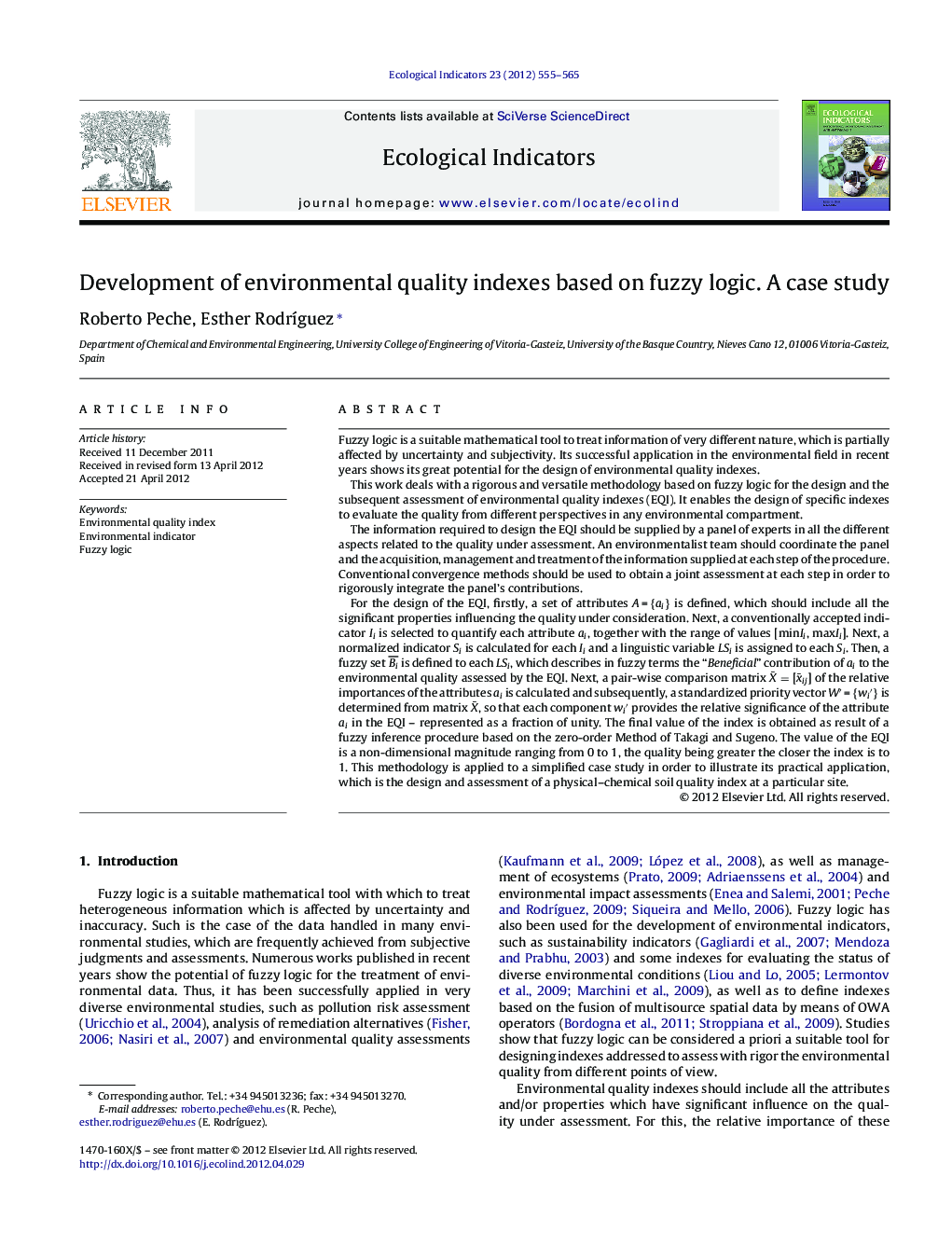| Article ID | Journal | Published Year | Pages | File Type |
|---|---|---|---|---|
| 6295641 | Ecological Indicators | 2012 | 11 Pages |
Abstract
For the design of the EQI, firstly, a set of attributes A = {ai} is defined, which should include all the significant properties influencing the quality under consideration. Next, a conventionally accepted indicator Ii is selected to quantify each attribute ai, together with the range of values [minIi, maxIi]. Next, a normalized indicator Si is calculated for each Ii and a linguistic variable LSi is assigned to each Si. Then, a fuzzy set Bi¯ is defined to each LSi, which describes in fuzzy terms the “Beneficial” contribution of ai to the environmental quality assessed by the EQI. Next, a pair-wise comparison matrix X¯=[x¯ij] of the relative importances of the attributes ai is calculated and subsequently, a standardized priority vector Wâ²Â = {wiâ²} is determined from matrix X¯, so that each component wiâ² provides the relative significance of the attribute ai in the EQI - represented as a fraction of unity. The final value of the index is obtained as result of a fuzzy inference procedure based on the zero-order Method of Takagi and Sugeno. The value of the EQI is a non-dimensional magnitude ranging from 0 to 1, the quality being greater the closer the index is to 1. This methodology is applied to a simplified case study in order to illustrate its practical application, which is the design and assessment of a physical-chemical soil quality index at a particular site.
Keywords
Related Topics
Life Sciences
Agricultural and Biological Sciences
Ecology, Evolution, Behavior and Systematics
Authors
Roberto Peche, Esther RodrÃguez,
